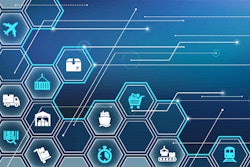
It was March 11, 2020 when the World Health Organization first characterized the Coronavirus disease (COVID-19) as a pandemic. Flying past the one-year mark, the state of things don’t look quite as different as one might have hoped. Around the world, entire corporate teams continue to operate from the safety of their living rooms. Communities with high case counts are still committed to keeping their distance. And, though the rollout of the vaccine makes us hopeful for this time next year, we’re still in the thick of COVID-19 management.
Companies who have found some success with their pandemic-era pivots—whether a re-imagined business model or a move toward e-commerce—aren’t looking back. Virtually all businesses across all sectors have been reimagined, and mass-scale shifts have sent ripples through supply chains. In four short quarters, inefficiencies have been exposed and new solutions have taken their place; already, the market has named the winning strategies for post-COVID-19 supply chain strength.
Technological improvements: A holistic approach
Company owners are turning to technology to solve the oversights of pre-pandemic supply chain practices. Rightfully so; smart technological investments recover their cost very quickly, and surely any strategy that rises to the challenges of post-COVID-19 demand will require the assistance of artificial intelligence (AI), machine learning, robotics and automation.
But, improvements can’t be made in isolation; investments that optimize only one aspect of supply rarely improve the chain as a whole. To avoid tunnel vision, owners are considering the digital supply network, a term coined by Deloitte back in 2016. The digital supply network is a dynamic, interconnected system that can be readily incorporated into the flow of supply, replacing linear, sequential supply chain operations with interconnected, open systems—more efficient, reliable and cost-effective than ever before. The math becomes simple -- investments that strengthen the digital supply network will in turn strengthen the supply chain as a whole.
End-to-end visibility: We can see clearly now
In the after-COVID-19 world, commerce will look different in more ways than one. One of the more profound shifts will be the diversification of sales channels; e-commerce saw a huge uptick throughout the pandemic, particularly in sectors that hadn’t yet brought their offerings online. Companies, manufacturers and suppliers will need new levels of coordination to manage this multi-channel demand.
Fortunately, digital supply networks are able to integrate information from multiple different sources to inform procurement and fulfillment systems. Integrated AI solutions are mining data from multiple locations—point-of-sale data, e-commerce orders, marketing data, consumer social media accounts—to offer an adaptive, dynamic understanding of demand. AI can study consumer patterns and relevant market data to make predictions regarding short-term needs for product replenishment, order delivery and shelf stocking. The combination of AI and smarter analytics can improve visibility throughout the entire supply chain process, limiting disruptions, minimizing under-stock or over-supply and boosting profitability.
Real resilience
One of the unforgettable lessons arising from the past 12 months is the importance of regionalizing production capacity such that it’s closer to the end customer in prime markets with high local demand. Restrictions on travel left companies with single-source dependencies completely out of options. And, in such trying times, owners are likely to be once bit, twice shy.
But, bringing supply closer to home is a surface-level solution, one that might only offer short-lived benefits as operations re-balance. Technological solutions need to be in place in order to realize true diversification. Smart technologies can monitor and report on the activity across complex networks in real time. Owners, manufacturers and suppliers can react, adapt and problem-solve quickly as different scenarios arise. They can optimize supply planning and remain agile throughout the production process. Advanced technology can help troubleshoot problems farther down the supply chain, adapting to everything from changed consumer demand to problems with a supplier’s supply. Along with a diffuse supply network, these solutions will empower a more resilient operation moving forward.
Robotics and the future of supply chain work
In the move toward remote work, the manufacturing sector was no exception. Workers across the globe had limited access to shop floors and manufacturing plants. Supply chain professionals are now investing in automated technologies and robotics to empower their teams toward a smarter, safer and more streamlined workflow.
Leveraging data capabilities and robotic technologies, professionals can monitor plant equipment and pre-program automated responses to different scenarios. Robotics can augment labor-heavy tasks, freeing up talented professionals to work on larger supply chain processes. Repetitive tasks that are liable for human error can be streamlined, freeing up creative thinkers to oversee operations at a higher level. Supply chain professionals can realize more efficiency in their remote operations, keeping their teams agile and able to adjust quickly as the sector continues to evolve.
In a recent Deloitte study, 79% of manufacturers reported an intention of increasing their AI investment over the coming years. Additionally, 76% are predicting that AI will be integrate to all enterprise applications by 2023. While the specifics will continue to change, it seems safe to say that the 21st Century supply chain is entering a new phase of development; one that leverages technology for transparency and resilience, and that empowers supply chain teams to work efficiently, creatively and from a distance.



















![Pros To Know 2026 [color]](https://img.sdcexec.com/mindful/acbm/workspaces/default/uploads/2025/08/prostoknow-2026-color.mduFvhpgMk.png?ar=16%3A9&auto=format%2Ccompress&bg=fff&fill-color=fff&fit=fill&h=135&q=70&w=240)
